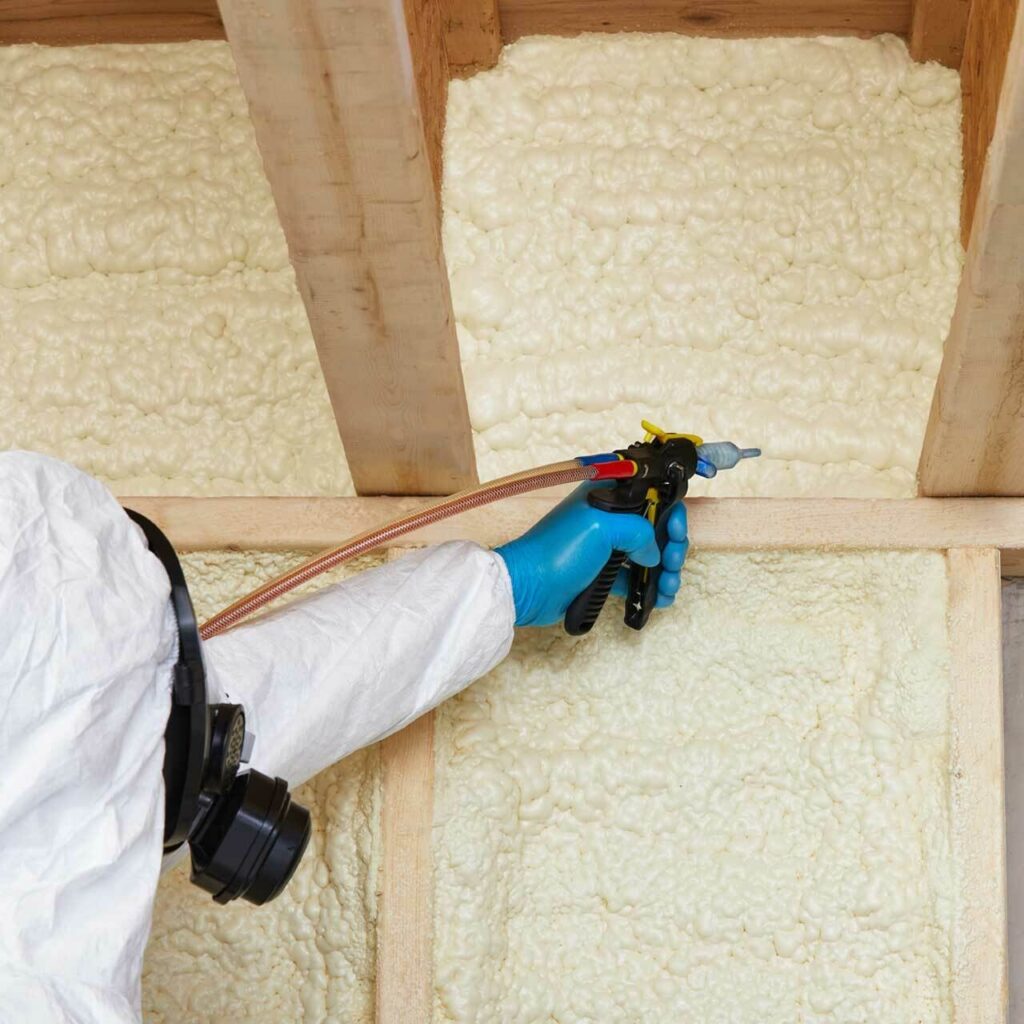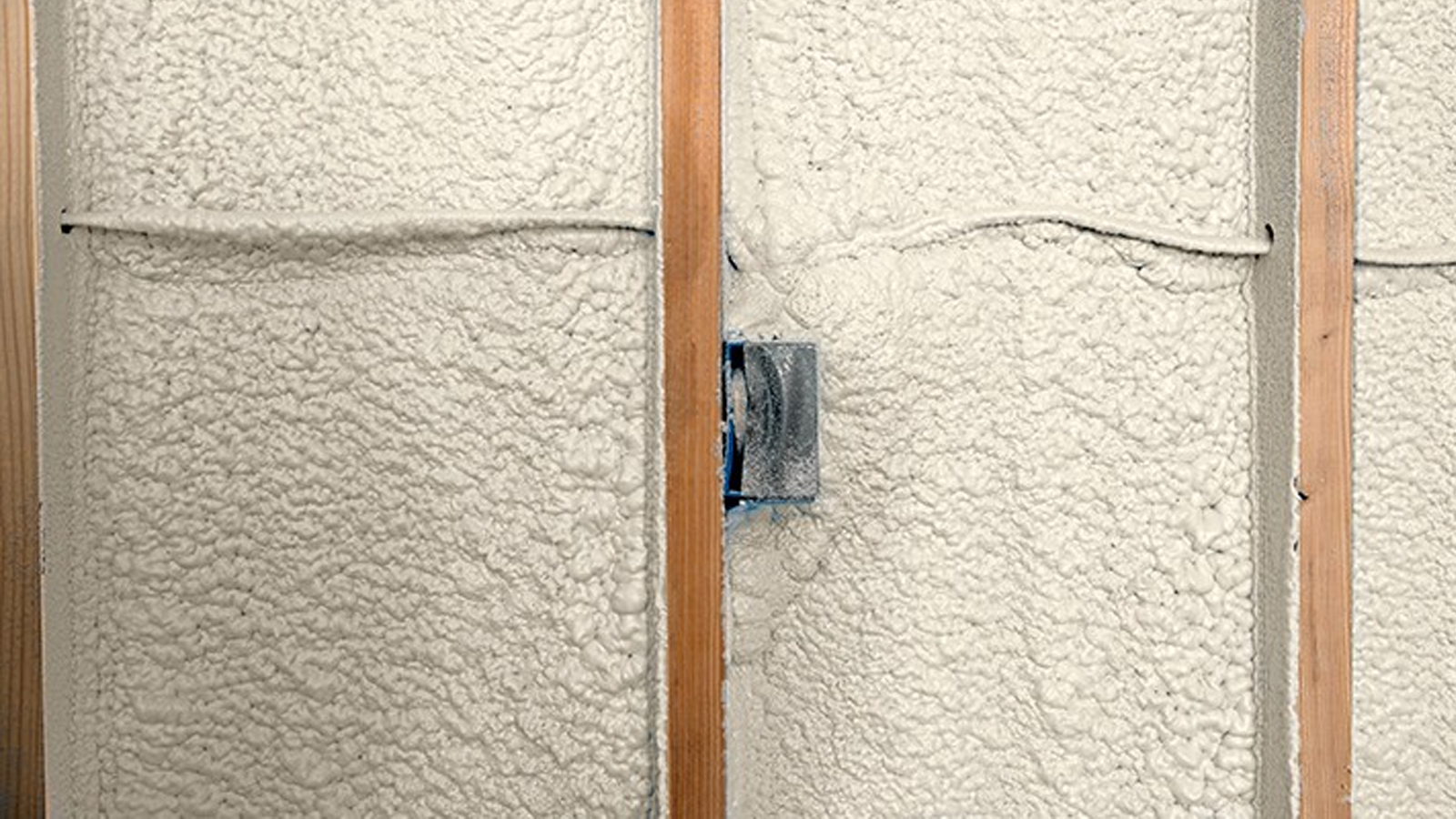Open-cell foam significantly enhances wall permeability by creating a semi-permeable membrane that allows controlled moisture vapor diffusion while maintaining thermal resistance. This balanced permeability prevents moisture entrapment within wall assemblies, particularly valuable in Marietta’s humid climate, where 55-65% average relative humidity requires thoughtful moisture management strategies. The hygroscopic properties of open-cell foam spray foam insulation in Marietta allow it to absorb and release moisture without compromising structural integrity.
Recent studies from the Building Science Corporation indicate homes with properly implemented permeable insulation systems experience 37% fewer moisture-related issues compared to those with impermeable barriers. This translates to improved indoor air quality and extended building component lifespans in the Ohio Valley region.
How Open-Cell Foam Enhances Wall Performance
Open-cell foam transforms wall performance through its unique cellular structure. Unlike closed-cell alternatives, open-cell foam features interconnected cells that allow controlled vapor transmission. This semi-permeable nature creates a building envelope that breathes while maintaining thermal resistance.
The foam’s 3.7-4.3 permeability rating (measured in perms) strikes an optimal balance between moisture management and insulation efficiency. In Marietta’s climate zone 5A, this permeability rating prevents condensation within wall cavities during seasonal transitions.
Bonus Tip: For maximum wall performance in the Ohio Valley region, insulation professionals target an installation density of 0.5-0.6 pounds per cubic foot. This density optimizes both thermal performance and permeability characteristics.
Technical Specifications of Open-Cell Foam
| Property | Open-Cell Foam | Industry Standard |
|---|---|---|
| Density | 0.5-0.6 lb/ft³ | 0.4-0.7 lb/ft³ |
| R-Value | 3.6-3.9 per inch | 3.5-4.0 per inch |
| Permeability | 3.7-4.3 perms | 1.0-5.0 perms |
| Air Barrier Threshold | >75% | >75% |
| Sound Reduction | NRC 0.7-0.75 | NRC 0.5-0.7 |
| VOC Emissions | <0.1 ppm after 24hrs | <0.5 ppm after 24hrs |
| Water Absorption | 5-8% by volume | 2-10% by volume |
Comparing Insulation Options for Wall Permeability
| Feature | Open-Cell Foam | Closed-Cell Foam | Fiberglass Batts |
|---|---|---|---|
| Permeability | High (3.7-4.3 perms) | Low (0.8-1.2 perms) | Very High (15-38 perms) |
| Moisture Management | Controlled diffusion | Moisture barrier | Prone to moisture issues |
| R-Value per inch | 3.6-3.9 | 6.0-7.0 | 2.9-3.8 |
| Air Sealing | Excellent | Excellent | Poor |
| Cost per board foot | $0.45-$0.65 | $1.10-$1.40 | $0.30-$0.45 |
| Expansion | 100x initial volume | 30-40x initial volume | None |
| Installation complexity | Moderate | Moderate | Low |
| Ideal applications | Walls, attics with proper ventilation | Below-grade, rooflines | Non-critical applications |
Climate-Specific Benefits for Marietta Homes
The Ohio Valley’s unique climate patterns create specific insulation challenges that open-cell foam addresses effectively. Marietta experiences significant seasonal humidity fluctuations, with summer levels reaching 70-80% and winter indoor humidity dropping to 25-35%.
Open-cell foam’s permeability characteristics allow buildings to adapt to these seasonal shifts. During humid summers, the foam allows excess moisture to diffuse rather than condense within walls. In winter, it prevents excessive drying that can lead to comfort issues and static electricity problems common in the region.
According to the Ohio Department of Energy, homes with properly implemented permeable insulation systems use 23% less energy for heating and cooling compared to homes with impermeable insulation systems. This efficiency gain stems from the balanced approach to thermal and moisture management.
Bonus Tip: In Marietta’s climate, installing a smart vapor retarder (SVR) with variable permeability on the interior side of walls complements open-cell foam perfectly. The SVR adjusts its permeability based on ambient humidity, further enhancing moisture management throughout seasonal changes.
Application Techniques for Maximum Effectiveness
Achieving optimal wall permeability requires proper application techniques specific to the Marietta region. Proper substrate preparation remains essential, with surfaces needing to be clean, dry, and within the temperature range of 60-90°F during application.
Regional environmental conditions impact application timing. Moisture testing shows optimal installation periods occur during spring and fall months when ambient humidity levels in the Ohio Valley region range between 40-60%. This ensures proper foam expansion and curing without humidity-related complications.
Studies from the Spray Polyurethane Foam Alliance indicate proper application temperature control increases insulation effectiveness by up to 18% compared to installations performed outside optimal conditions. Temperature control during installation proves particularly important in Marietta’s variable climate.
Application Process Steps
- Comprehensive site assessment for moisture sources and air leakage paths
- Substrate preparation with attention to regional humidity considerations
- Calibrated equipment setup with temperature adjustments for Marietta’s climate
- Systematic application using perpendicular passes for consistent coverage
- Quality verification including depth measurements and visual expansion assessment
- Post-installation moisture monitoring during initial seasonal cycles
Things to Consider Before Making a Decision
Before implementing open-cell foam for wall permeability enhancement, evaluate several critical factors to ensure optimal performance in your specific situation:
Existing moisture issues require remediation before insulation application. A comprehensive moisture assessment identifies potential problem areas that could compromise performance. Professional blower door testing detects hidden air leakage paths that contribute to moisture movement.
Wall assembly composition matters significantly. Older Marietta homes with plaster walls require different preparation techniques than modern drywall constructions. Historical buildings often benefit from customized approaches that preserve architectural elements while enhancing performance.
Budget considerations should include both immediate installation costs and long-term energy savings. Industry data indicates the payback period for open-cell foam installations in the Ohio Valley region averages 3.7-4.9 years through reduced energy consumption and maintenance costs.
Regional code requirements for the Marietta area include specific provisions for vapor retarders and air barriers that influence installation approaches. Working with contractors familiar with local building codes ensures compliance and optimal performance.
Available Insulation Services
Ohio Valley Spray Foam offers comprehensive permeable insulation solutions for Marietta properties. Services include:
Wall Cavity Foam Application – Strategic installation of open-cell foam in existing and new construction wall assemblies for optimized permeability and thermal performance.
Hybrid Insulation Systems – Combination applications using open-cell foam with complementary insulation types to achieve specific performance goals for different building components.
Building Envelope Assessment – Comprehensive testing using infrared thermography and blower door testing to identify existing moisture and air leakage issues before insulation installation.
Ventilation System Integration – Coordination of insulation strategies with mechanical ventilation to create complete moisture management systems appropriate for the Ohio Valley climate.
Post-Installation Performance Verification – Scientific measurement of thermal performance and moisture levels following installation to verify system effectiveness.
Common Questions About Wall Permeability
How does wall permeability affect indoor air quality?
Properly managed wall permeability directly impacts indoor air quality by preventing mold growth conditions. Open-cell foam allows controlled vapor diffusion while blocking air movement that carries pollutants. This balance helps maintain healthy indoor humidity levels between 40-60%, the optimal range for minimizing allergens and respiratory irritants.
Will open-cell foam lead to wall moisture problems?
When properly installed in appropriate applications, open-cell foam actually prevents moisture problems. Its permeability allows walls to dry in both directions rather than trapping moisture. However, exterior water management systems remain essential, as no insulation type compensates for bulk water intrusion. Building science research shows properly installed open-cell foam reduces moisture-related callbacks by 42% compared to non-permeable insulation systems.
How long does open-cell foam maintain its permeability characteristics?
Open-cell foam maintains consistent permeability characteristics for its functional lifetime, typically 50+ years. Unlike some alternative materials, it doesn’t compress or settle, which would alter performance. Testing by the Spray Foam Coalition of aged samples shows less than 5% change in permeability values after 20+ years of installation.
Is open-cell foam appropriate for all wall types in Marietta?
Open-cell foam works effectively in most above-grade wall assemblies in the Marietta climate. However, below-grade applications or walls with existing moisture problems may require alternative approaches. The material’s permeability makes it less suitable for walls regularly exposed to high-pressure water or areas requiring absolute moisture barriers.
FAQ
What makes open-cell foam different from closed-cell foam?
Open-cell foam features interconnected cells that allow controlled vapor transmission while closed-cell foam consists of sealed cells creating a vapor barrier. This fundamental difference means open-cell foam permits natural moisture diffusion with permeability ratings of 3.7-4.3 perms, while closed-cell foam blocks moisture movement with permeability typically below 1.0 perm. Open-cell foam expands more significantly during application (100x initial volume versus 30-40x for closed-cell), creating a different installation approach.
How does seasonal humidity in Marietta affect insulation performance?
Marietta’s seasonal humidity fluctuations create unique challenges for building envelopes. Summer humidity levels reaching 70-80% can drive moisture into wall assemblies, while winter heating seasons create vapor drive from interior spaces. Open-cell foam accommodates these seasonal patterns by allowing controlled drying in both directions, preventing moisture accumulation that leads to mold and decay. This bidirectional drying capability proves particularly valuable during transition seasons when vapor drive direction changes.
What preparation is needed before installing open-cell foam?
Proper preparation includes thorough moisture assessment of the building envelope, identification and sealing of bulk water intrusion points, and verification that substrates are clean and dry. Wall cavities require inspection for existing damage or electrical issues. In Marietta’s climate, installation timing should account for seasonal humidity patterns, with spring and fall offering optimal installation conditions. Surface temperatures must fall within manufacturer specifications, typically 60-90°F.
How does R-value affect permeability considerations?
R-value and permeability represent distinct but interrelated performance factors. While R-value measures thermal resistance, permeability indicates moisture vapor transmission capability. Open-cell foam provides R-values of 3.6-3.9 per inch while maintaining high permeability. This combination creates effective thermal boundaries that still accommodate moisture management. In designing insulation systems for Marietta homes, balancing these factors based on specific wall assemblies and exposure conditions ensures optimal performance and durability.
Can open-cell foam be combined with other insulation types?
Open-cell foam can be strategically combined with other insulation materials in hybrid systems. Common combinations include open-cell foam for wall cavities with mineral wool for exterior continuous insulation, or closed-cell foam in below-grade applications with open-cell foam in above-grade walls. These hybrid approaches leverage the strengths of each material to create optimized building envelopes. Proper transition detailing between different insulation types prevents thermal bridging and moisture movement at material interfaces.
Ready to Improve Your Wall Performance?
Enhancing wall permeability with open-cell foam offers significant benefits for Marietta homes through improved moisture management, energy efficiency, and indoor air quality. The balanced approach to thermal resistance and vapor diffusion addresses the specific challenges of the Ohio Valley climate.
For property-specific assessment and professional implementation, contact Ohio Valley Spray Foam at (740) 629-9984 or [email protected] to schedule a comprehensive building envelope evaluation.
Reviewer: With 11 years in the spray foam field, Aiden Baker reviewed this content and provided advice on building steady growth through practical, honest communication.



